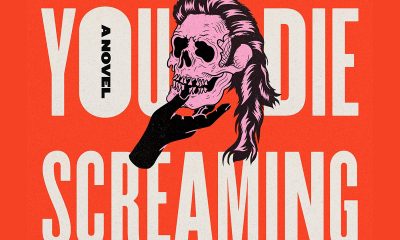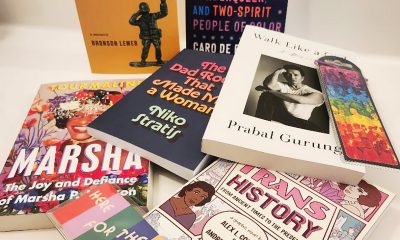Books
‘Young Bloomsbury’ explores queer family of choice in 1920s England
Meet the generation ‘That Redefined Love, Freedom, and Self-Expression’
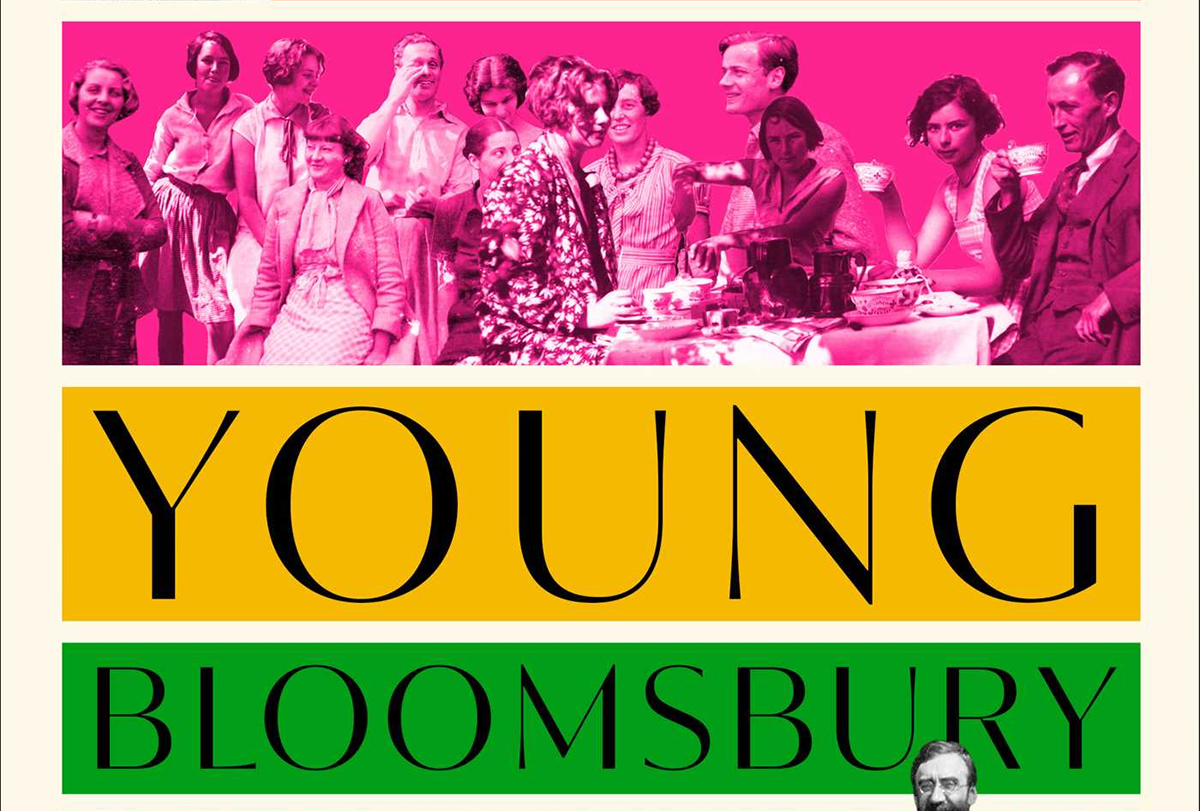
Safe spaces. Gender bending. Families of choice. Gender fluidity. Young queers being seen by their elders (hetero and queer). Throuples. Banned books. Conversion therapy.
At a party, a couple, two beautiful bisexual women, sing the latest show tunes and dance. One of them, wearing a purple dress, plays her saxophone.
We see you, Gen Z!
But you weren’t the first to embrace queerness in all its fab permutations.
A century ago in London at a time when being queer was illegal, a group of queer, gender-bending writers and artists — young members of the Bloomsbury group – broke through sexual and gender boundaries and formed families of choice.
In 1923, Henrietta Bingham and Mina Kirstein were the bisexual couple that danced and sang show tunes at the party. Bingham in her purple dress played the sax, author Nino Strachey writes in her illuminating, entertaining new book “Young Bloomsbury: The Generation That Redefined Love, Freedom, and Self-Expression in 1920s England.”
If you’ve had a queer friend rave about the gender-bending in “Orlando” by Virginia Woolf, or if you’ve seen the movie “Maurice” (of the novel with the same name), you’ve heard of the Bloomsbury group.
For Nino Strachey, the Bloomsbury group is up close and personal.
For starters, Nino Strachey is a descendent of Lytton Strachey, the queer, razor-sharp writer and founding member of the Bloomsbury group. She is the last member of the Strachey family to have grown up at Sutton Court in Somerset (U.K.), home of the Strachey family for more than 300 years.
Recently, Nino Strachey talked with the Blade about why she wrote “Young Bloomsbury,” the parallels between Young Bloomsbury in the 1920s and Gen Z today and the reaction to her book.
The formation of the Bloomsbury group began after Virginia and Vanessa Stephen’s father died in 1904. Virginia Stephens became Virginia Woolf after her marriage to Leonard Woolf. Vanessa Stephens became Vanessa Bell after her marriage to Clive Bell.
The Stephen sisters “escaped” to 46 Gordon Square in London, Strachey writes in “Young Bloomsbury.”
There, they could have a “life free from adult interference,” Strachey writes.
The Stephen sisters got to know their brothers’ — Thoby and Adrian — Cambridge University friends. These friends included John Maynard Keynes (who would become an acclaimed economist), Lytton Strachey, who would transform the art of biography, Duncan Grant who would revolutionize the art world and E.M. Forster, who would write “Maurice,” a novel with a queer love story that wouldn’t be published until after his death in 1970.
These queer artists and writers found “new ways to connect,” Strachey writes, “a commitment to honest communication between the sexes, to freedom in creativity, to openness in all sexual matters.”
The group was beginning to have critical support at the onset of World War I. Though the group’s (which Strachey calls “Old Bloomsbury”) activities broke down during the war, the cohort’s work took off after the war.
By the 1920s, the Old Bloomsbury artists and writers, then nearly in their 40s, had become successful. Virginia Woolf was photographed in Vogue. Lytton Strachey’s biography “Eminent Victorians,” a satirical takedown of Florence Nightingale and other renowned Victorians, was the talk of the town. Duncan Grant’s paintings were popular.
A group of queer young writers and artists, who Nino Strachey calls Young Bloomsbury, became lovers, friends, and creative collaborators with members of Old Bloomsbury.
Called the “Bright Young Things” at the time by the press and notables such as novelist Evelyn Waugh, members of Young Bloomsbury included: Julia Strachey, niece of Lytton Strachey and author of the novel “Cheerful Weather for the Wedding”; journalist and literary critic Raymond Mortimer; music critic and novelist Eddy Sackville-West; journalist and socialist politician John Strachey; sculptor Stephen “Tommy” Tomlin and artist and illustrator Stephen Tennant.
Members of Bloomsbury who were younger than Old Bloomsbury and older than the group’s younger members included the painter and decorative artist Dora Carrington; and the bookseller, publisher and writer David “Bunny” Garnett.
Nino Strachey didn’t write “Young Bloomsbury” as an academic project. Her reasons for writing the book were personal.
“I wrote [Young Bloomsbury],” Strachey said, “because my child identifies as gender fluid and queer.”
“It’s been a delight,” she added, “Something for us to do together.”
It’s been lovely for Nino Strachey to look at the queer history of the Strachey family and their friends and lovers, and to find queer role models going back to the 19th century.
Strachey became interested in writing “Young Bloomsbury” a few years ago. “I was working for the National Trust,” Strachey said, “I was researching the house called Knole – the home of Vita Sackville-West [poet, novelist, gardener and a lover of Virginia Woolf] and her cousin Eddy Sackville-West.”
In the midst of this research, one of Nino Strachey’s colleagues told her that she’d found some boxes of Strachey family papers.
Until then, Nino Strachey hadn’t known that, in the 1920s, her cousin John Strachey had lived with Eddy Sackville-West in London. From their letters, “I learned that they were incredibly open about their gender identity and sexuality,” Strachey said. “I wouldn’t have expected that 100 years ago! I don’t think anybody had looked into the boxes since the 1920s.”
“I thought: this is something I must write about,” Strachey said.
In the past, people have concentrated so much on who had sex with whom in Bloomsbury, that they’ve forgotten how important friendships were to the group, Strachey said. “They would be lovers with each other. Have quarrels,” she said, “but they cared for each other. They formed life-long friendships.”
They didn’t have the words for it a century ago but Bloomsbury became a family of choice.
At a time when a man could be arrested for carrying a powder puff in public or a queer person subjected to conversion therapy, Bloomsbury became a safe space for young queer people.
“Older Bloomsbury members took on a parental role for queer young artists and writers,” Strachey said. “They nurtured not only their careers but their personal life choices at a time when many of their parents weren’t supportive.”
Young Bloomsbury members would be pressured to undergo conversion therapy, Strachey said. “It was legal then. It was horrible,” she said, “involving painful injections.”
Conversion therapy wasn’t the only way in which queerness was repressed. Then as now, books with queer stories were banned.
Bloomsbury rallied around when lesbian writer Radclyffe Hall’s novel “The Well of Loneliness” was prosecuted for obscenity. Virginia Woolf and E.M. Forster wrote letters of support for Hall. The book’s publication was blocked because it was judged to be obscene. (It was published in the U.K. in 1959.)
“You might have thought that ‘Orlando’ [the gender-bending novel by Virginia Woolf] would have been prosecuted for being obscene,” Strachey said, “but luckily that didn’t happen because it’s couched in this wonderful, historical, fanciful language.”
Strachey loved learning about how both Vita Sackville-West (with her masculine presentation) and Eddy Sackville-West (with his makeup and eye shadow) inspired Woolf’s writing of “Orlando.” “Virginia put these people into a single character who survives for 400 years,” Strachey said.
“Orlando,” which remains a “contemporary” classic novel, is having a moment today, Strachey said. “It’s on stage in London. For the first time, with a nonbinary actor playing the lead,” she added, “It’s getting rave reviews!”
People have misperceptions about Virginia Woolf, Strachey said. “Some interpretations see her, perhaps, as being quite harsh and judgmental,” Strachey said.
Yet, Woolf could be “absolutely supportive” and quite funny, Strachey said. “She and Lytton were really naughty,” she said, “they loved to tease people!”
“There’s a series of photographs where they’re together and smiling, and you can see how they’re riffing off each other,” Strachey said.
Virginia Woolf and other members of Bloomsbury listened to the romantic troubles of younger Bloomsbury members when their families wouldn’t. “Eddy Sackville-West read his diaries to Virginia Woolf,” Strachey said, “He talked to her about his love life.”
Old and Young Bloomsbury members loved Noel Coward and musicals. Younger members of Bloomsbury clued older members in on new technologies from radio broadcasting to flying lessons to movies to gossip columns. Young Bloomsbury “was tuned into the world of the stage – to film actresses like Mary Pickford,” Strachey said.
Strachey has been heartened by the feedback “Young Bloomsbury” has received. Not just from journalists and reviewers, but from people at festivals. “The warmest moments have been when people come up to me,” Strachey said, “to talk about chosen families and queer role models.”
“Cis, hetero couples ask: How can we support trans young people,” she added.
This is important to Strachey. We think society is so inclusive, but it’s not, she said.
“The statistics for LGBTQ+ youth regarding self-harm, bullying, prejudice remain really high,” Strachey said.
Anything one can do to raise support and awareness is a good thing, she added.
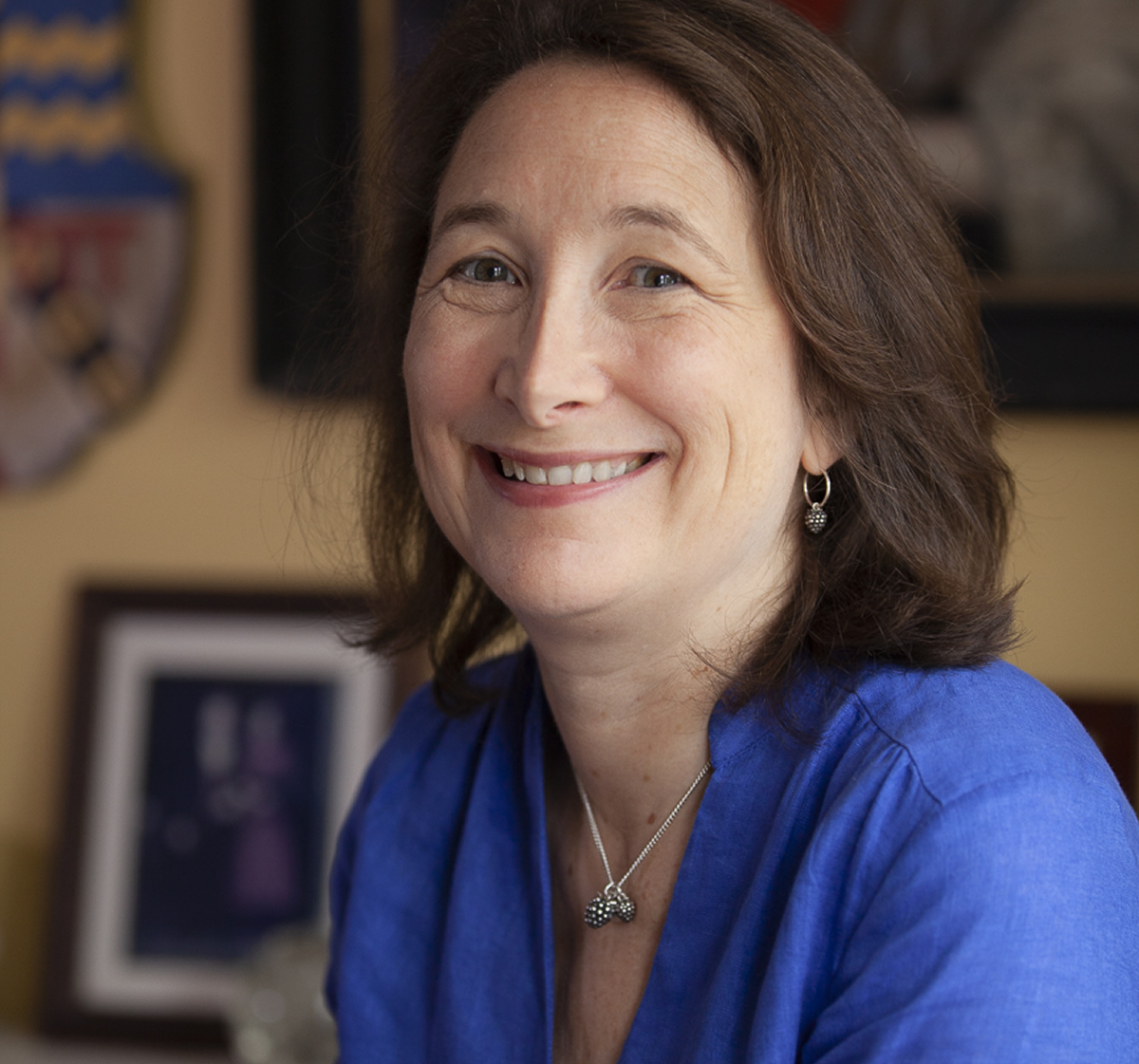
The Blade may receive commissions from qualifying purchases made via this post.
Books
Embracing the chaos can be part of the fun
‘Make Sure You Die Screaming’ offers many twists and turns
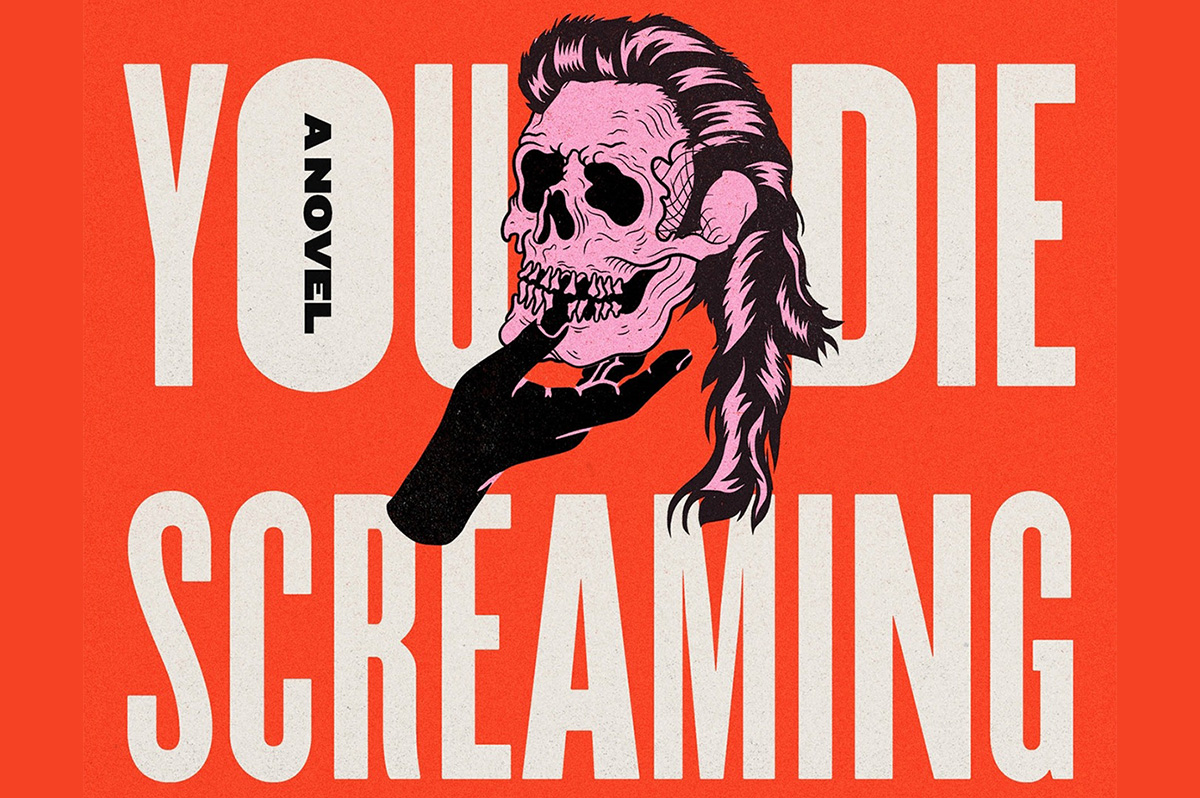
‘Make Sure You Die Screaming’
By Zee Carlstrom
c.2025, Random House
$28/304 pages
Sometimes, you just want to shut the door and forget what’s on the other side.
You could just wipe it from your memory, like it didn’t occur. Or create an alternate universe where bad things never happen to you and where, as in the new novel “Make Sure You Die Screaming” by Zee Carlstrom, you can pretend not to care.

Their mother called them “Holden,” but they’d stopped using that name and they hadn’t decided what to use now. What do you call an alcoholic, queer, pessimistic former ad executive who’s also “The World’s First Honest White Man,” although they no longer identify as a man? It’s a conundrum that they’ll have to figure out soon because a cop’s been following them almost since they left Chicago with Yivi, their psychic new best friend.
Until yesterday, they’d been sleeping on a futon in some lady’s basement, drinking whatever Yivi mixed, and trying not to think about Jenny. They killed Jenny, they’re sure of it. And that’s one reason why it’s prudent to freak out about the cop.
The other reason is that the car they’re driving was stolen from their ex-boyfriend who probably doesn’t know it’s gone yet.
This road trip wasn’t exactly well-planned. Their mother called, saying they were needed in Arkansas to find their father, who’d gone missing so, against their better judgment, they packed as much alcohol as Yivi could find and headed south. Their dad had always been unique, a cruel man, abusive, intractable; he suffered from PTSD, and probably another half-dozen acronyms, the doctors were never sure. They didn’t want to find him, but their mother called…
It was probably for the best; Yivi claimed that a drug dealer was chasing her, and leaving Chicago seemed like a good thing.
They wanted a drink more than anything. Except maybe not more than they wanted to escape thoughts of their old life, of Jenny and her death. And the more miles that passed, the closer they came to the end of the road.
If you think there’s a real possibility that “Make Sure You Die Screaming” might run off the rails a time or three, you’re right. It’s really out there, but not always in a bad way. Reading it, in fact, is like squatting down in a wet, stinky alley just after the trash collector has come: it’s filthy, dank, and profanity-filled. Then again, it’s also absurd and dark and philosophical, highly enjoyable but also satisfying and a little disturbing; Palahniuk-like but less metaphoric.
That’s a stew that works and author Zee Carlstrom stirs it well, with characters who are sardonic and witty while fighting the feeling that they’re unredeemable losers – which they’re not, and that becomes obvious.
You’ll see that all the way to one of the weirdest endings ever.
Readers who can withstand this book’s utter confusion by remembering that chaos is half the point will enjoy taking the road trip inside “Make Sure You Die Screaming.”
Just buckle up tight. Then shut the door, and read.
The Blade may receive commissions from qualifying purchases made via this post.
Books
Two new books on dining out LGBTQ-style
Visit nightclubs, hamburger joints, and a bathhouse that feeds customers

‘What is Queer Food? How We Served a Revolution’
By John Birdsall
c.2025, W.W. Norton
$29.99/304 pages
‘Dining Out: First Dates, Defiant Nights, and Last Call Disco Fries at America’s Gay Restaurants’
By Erik Piepenburg
c.2025, Grand Central
$30/352 pages
You thought a long time about who sits where.
Compatibility is key for a good dinner party, so place cards were the first consideration; you have at least one left-hander on your guest list, and you figured his comfort into your seating chart. You want the conversation to flow, which is music to your ears. And you did a good job but, as you’ll see with these two great books on dining LGBTQ-style, it’s sometimes not who sits where, but whose recipes were used.
When you first pick up “What is Queer Food?” by John Birdsall, you might miss the subtitle: “How We Served a Revolution.” It’s that second part that’s important.

Starting with a basic gay and lesbian history of America, Birdsall shows how influential and (in)famous 20th century queer folk set aside the cruelty and discrimination they received, in order to live their lives. They couldn’t speak about those things, he says, but they “sat down together” and they ate.
That suggested “a queer common purpose,” says Birdsall. “This is how who we are, dahling, This is how we feed our own. This is how we stay alive.”
Readers who love to cook, bake or entertain, collect cookbooks, or use a fork will want this book. Its stories are nicely served, they’re addicting, and they may send you in search of cookbooks you didn’t know existed.
Sometimes, though, you don’t want to be stuck in the kitchen, you want someone else to bring the grub. “Dining Out” by Erik Piepenburg is an often-nostalgic, lively look at LGBTQ-friendly places to grab a meal – both now and in the past.

In his introduction, Piepenburg admits that he’s a journalist, “not a historian or an academic,” which colors this book, but not negatively. Indeed, his journeys to “gay restaurants” – even his generous and wide-ranging definitions of the term – happily influence how he presents his narrative about eateries and other establishments that have fed protesters, nourished budding romances, and offered audacious inclusion.
Here, there are modern tales of drag lunches and lesbian-friendly automats that offered “cheap food” nearly a century ago. You’ll visit nightclubs, hamburger joints, and a bathhouse that feeds customers on holidays. Stepping back, you’ll read about AIDS activism at gay-friendly establishments, and mostly gay neighborhood watering holes. Go underground at a basement bar; keep tripping and meet proprietors, managers, customers and performers. Then take a peek into the future, as Piepenburg sees it.
The locales profiled in “Dining Out” may surprise you because of where they can be found; some of the hot-spots practically beg for a road trip.
After reading this book, you’ll feel welcome at any of them.
If these books don’t shed enough light on queer food, then head to your favorite bookstore or library and ask for help finding more. The booksellers and librarians there will put cookbooks and history books directly in your hands, and they’ll help you find more on the history and culture of the food you eat. Grab them and you’ll agree, they’re pretty tasty reads.
The Blade may receive commissions from qualifying purchases made via this post.

You’re going to be on your feet a lot this month.
Marching in parades, dancing in the streets, standing up for people in your community. But you’re also likely to have some time to rest and reflect – and with these great new books, to read.
First, dip into a biography with “Marsha: The Joy and Defiance of Marsha P. Johnson” by Tourmaline (Tiny Rep Books, $30), a nice look at an icon who, rumor has it, threw the brick that started a revolution. It’s a lively tale about Marsha P. Johnson, her life, her activism before Stonewall and afterward. Reading this interesting and highly researched history is a great way to spend some time during Pride month.
For the reader who can’t live without music, try “The Dad Rock That Made Me a Woman” by Niko Stratis (University of Texas Press, $27.95), the story of being trans, searching for your place in the world, and finding it in a certain comfortable genre of music. Also look for “The Lonely Veteran’s Guide to Companionship” by Bronson Lemer (University of Wisconsin Press, $19.95), a collection of essays that make up a memoir of this and that, of being queer, basic training, teaching overseas, influential books, and life.
If you still have room for one more memoir, try “Walk Like a Girl” by Prabal Gurung (Viking, $32.00). It’s the story of one queer boy’s childhood in India and Nepal, and the intolerance he experienced as a child, which caused him to dream of New York and the life he imagined there. As you can imagine, dreams and reality collided but nonetheless, Gurung stayed, persevered, and eventually became an award-winning fashion designer, highly sought by fashion icons and lovers of haute couture. This is an inspiring tale that you shouldn’t miss.
No Pride celebration is complete without a history book or two.
In “Trans History: From Ancient Times to the Present Day” by Alex L. Combs & Andrew Eakett ($24.99, Candlewick Press), you’ll see that being trans is something that’s as old as humanity. One nice part about this book: it’s in graphic novel form, so it’s lighter to read but still informative. Lastly, try “So Many Stars: An Oral History of Trans, Nonbinary, Genderqueer, and Two-Spirit People of Color” by Caro De Robertis (Algonquin Books of Chapel Hill. $32.00) a collection of thoughts, observations, and truths from over a dozen people who share their stories. As an “oral history,” you’ll be glad to know that each page is full of mini-segments you can dip into anywhere, read from cover to cover, double-back and read again. It’s that kind of book.
And if these six books aren’t enough, if they don’t quite fit what you crave now, be sure to ask your favorite bookseller or librarian for help. There are literally tens of thousands of books that are perfect for Pride month and beyond. They’ll be able to determine what you’re looking for, and they’ll put it directly in your hands. So stand up. March. And then sit and read.
-

 U.S. Supreme Court3 days ago
U.S. Supreme Court3 days agoSupreme Court to consider bans on trans athletes in school sports
-

 Out & About3 days ago
Out & About3 days agoCelebrate the Fourth of July the gay way!
-

 Virginia3 days ago
Virginia3 days agoVa. court allows conversion therapy despite law banning it
-
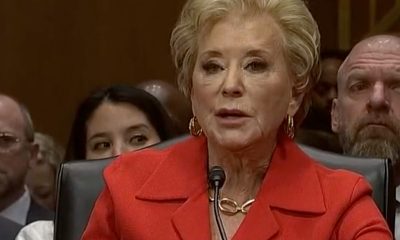
 Federal Government5 days ago
Federal Government5 days agoUPenn erases Lia Thomas’s records as part of settlement with White House

